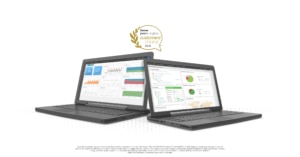Think about the last time you had an outage or service interruption in your IT environment.
When did you first discover the outage? How long had it been going on? What was the impact to the business? How did you find out about it?
If you found it before anyone else noticed, then congratulations. Hopefully you were able to minimize the impact and get the issue resolved quickly.
If your boss found out about it before you did, you probably don’t need to be reminded about how bad that was. Your boss likely wasn’t too kind, nor did she hold back on letting you know that she wasn’t happy.
But if one of your users found out about it before anyone in IT did, that’s even worse. Not only was that user unable to perform her job, she also formed (or reinforced) opinions about IT—and those opinions were likely not positive.
Which brings up the question: what are you doing to proactively monitor your IT environment?
The Benefits of Monitoring
There are tangible benefits to proactively monitoring your IT environment. First is the time and money saved by avoiding downtime altogether. Monitoring allows IT to intervene before a service interruption occurs, such as adding space to a filesystem before it reaches capacity. Whenan unplanned outage occurs (it does happen), monitoring saves time and money by helping IT respond as quickly as possible and keeping downtime to a minimum.
Perhaps not as obvious are the intangible benefits of monitoring.
Proactively monitoring the IT environment provides intangible benefits which perhaps are not as obvious. Because outages become a rare occurrence, the user community knows and trusts that IT will provide reliable systems so users can get their jobs done. When IT responds quickly to an outage, users know IT is keeping an eye on things, which results in a sense of confidence.
This same sense of reliability and confidence carries over into the IT staff as well. Because monitoring delivers that constant oversight of the IT environment, teams can focus on other value-added work rather than be concerned with whether the environment is performing optimally.
How Organizations Monitor Their IT Environment
There are several approaches IT organizations take to monitor their environment, but many of those approaches aren’t effective or sustainable.
Sometimes IT organizations devise and implement a manual monitoring approach like using a checklist. With this approach, there is a set of eyes looking at known targets on a daily or weekly basis, such as tablespace utilization in a database or ensuring certain services are executing on a specific server. But as soon as those eyes turn to look somewhere else, that resource is no longer monitored until the next use of the checklist.
Sometimes IT organizations implement an open source or freeware product to monitor IT resources. Freeware or open-source products are a no-cost way to obtain monitoring capability. But such monitoring solutions really aren’t free. If there’s any support or maintenance that is needed, someone from the IT organization must do it. If a new feature or functionality is needed, freeware offers few if any options, short of building them yourself.
Sometimes point solutions are implemented that monitor only specific parts of the IT environment and nothing else. This means that the network team has tools that only monitor the network infrastructure. The database team uses tools that only monitor various database resources. But these solutions don’t provide a holistic approach to monitoring the IT environment and do nothing to enable good interdepartmental communication and coordination should an outage occur.
In any case, consider this: The time you’re spending manually following a checklist to monitor various resources in the environment is time that you’re not investing in new initiatives or projects. The time that you’re finger-poking freeware or open-source code is time that is not being utilized in directly helping customers or performing other business value-added activities. Any time your technicians are doing redundant troubleshooting due to using siloed point solutions is a waste of time and money. Are these “keeping the lights on” activities where your business really wants to spend its IT dollars?
The High Cost of the Status Quo
Perhaps you’ve gotten along okay with your current monitoring approach.
Perhaps you’ve been lucky that you’ve been able to identify and fix outages before there’s been too much impact.
Perhaps the boss hasn’t yelled at you
that much.
Too often, businesses consider “doing nothing” as a valid option for any business decision. Don’t be fooled—there’s a cost to doing nothing if your monitoring solution isn’t what your organization needs. “Doing nothing” introduces needless risk to both IT and the business.
Today, IT is a part of every part of a business. When it comes to today’s businesses, an IT outage means lost revenues, lost opportunities, and lost productivity. In other words, an outage has a direct cost impact to the business. Using a monitoring solution at least minimizes the impact of an outage. But a good monitoring solution goes a step further by helping the IT organization avoid outages by proactively alerting technicians regarding performance issues or capacity thresholds.
But good monitoring affects more than a business’ bottom line—it also affects the reputation of the business with its customers. What will customers think when the company’s order-entry portal is down? What will customers think if they learn that an outage could have been prevented if only the filesystem had been appropriately monitored?
Perhaps it’s time to revisit your monitoring approach.
Signs You Need to Revisit Your Monitoring Approach
Here are five signs that it’s time to revisit your monitoring approach.
- You’re spending more time fire-fighting than delivering good technology solutions. Perhaps because of limitations in your monitoring solution, you’re unable to adequately monitor critical resources in your IT environment—and it’s always the resources that are inadequately monitored that eventually burn you.
- You’re spending more time maintaining and configuring your monitoring solution than delivering good technology solutions. When supporting open source or freeware monitoring tools nearly becomes someone’s full-time job, it may be time to look for another solution.
- Your IT environment has grown. Some monitoring solutions have an upper limit or fixed number of monitoring targets.
- Monitoring has become “one more thing” to remember to do. Has this ever happened to you? Your IT organization had to make an expedited purchase of hardware, but you forgot to add it to your current monitoring solution—and then there was an outage that involved that new hardware. A modern monitoring solution would discover that new hardware so you can correctly setup the right monitors for that resource.
- You have more monitoring consoles or dashboards to watch than people to watch them. Using multiple monitoring point solutions means that someone from each IT team must keep an eye on that solution’s reporting. It also increases the risk of not having the right technicians responding to an alert.
Proactive, centralized monitoring can save you and your organization time and money, but only if you have the right solution in place for your environment. If any of the previously mentioned signs you need to revisit your monitoring approach ring true, it will likely be worth your time to take another look at what alternatives are out there, and free up some of your cycles from “keeping the lights on.”








